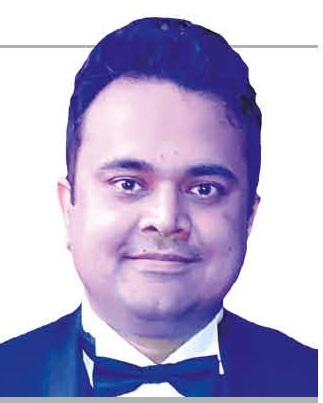Simply put, ‘burnout’ is defined in the words used by renowned psychologist Christina Maslach, nearly four decades ago: ‘What started out as important, meaningful and challenging work becomes unpleasant, unfulfilling and meaningless. Energy turns into exhaustion, involvement turns into cynicism and efficacy turns into ineffectiveness.’ Does that ring a bell for any of my NHS colleagues?
The term ‘burnout’ is often used synonymously with stress/work-related stress, but it is a separate health condition coded in the ICD-10 (International Statistical Classification of Diseases and Related Health Problems, 10th Revision), resulting from continuous and long term stress exposure, particularly related to psychosocial factors, and chronic emotional and interpersonal job stressors.
Stress and burnout are essentially different, as stress is characterised by over-engagement, hyperactivity and loss of energy and can lead to anxiety disorders, while burnout is characterised by disengagement, a feeling of helplessness/hopelessness and loss of motivation and can lead to detachment and depression.
Burnout is identified by the presence of one or more of three features:
- emotional exhaustion: a depletion of sentiments/feelings
- depersonalisation: such as being detached/callous towards patients (e.g. rather than ‘Mrs Smith developed diabetic ketoacidosis (DKA) due to insulin availability’, saying ‘Bed 9 is DKA due to non-compliance’)
- lack of personal accomplishment: a reduced sense of achievement/satisfaction from work.
As burnout is fundamentally a work-related condition, the only guaranteed way to have no burnout would be to not work at all.
BACKGROUND
The ‘history’ of burnout began in 1974, when Herbert Freudenberger first coined the term. A few years later, Christina Maslach not only defined burnout and its dimensions, but also came up with a tool to measure it (the Maslach Burnout Inventory) which is still the most widely used questionnaire globally. The other tools used to assess burnout include the Oldenburg Inventory and the Copenhagen Survey, but none of them are able to assess all three dimensions of burnout.
'What started out as important, meaningful and challenging work becomes unpleasant, unfulfilling and meaningless. Energy turns into exhaustion, involvement turns into cynicism and efficacy turns into ineffectiveness.'
CAUSES AND EFFECTS
The mechanism by which burnout occurs is complex, but it generally arises from a lack of resources, demands of work overload, personal conflicts and a lack of coping mechanisms. Burnout develops over a period of time, usually a few months.
Burnout syndrome is considered to be a predictor for developing depression, absenteeism, decreased capacity to cope with stress and a decline in working ability, alongside an increased risk of eating disorders, overweight, obesity, coronary heart disease and myocardial infarction. Healthcare professionals with burnout also find it more difficult to motivate patients who need constant engagement and have longer term conditions.
PREVALENCE
At present, UK workforce data do not identify burnout in particular, or differentiate it from stress. However, if we look at data from 2016, they show that work-related stress (including burnout) accounted for 37% of all work-related cases of ill-health and 45% of all working days lost due to ill-health. Thus it was the highest reported work-related illness, with an average of 23.9 working days lost per worker.
Burnout seems to affect healthcare professionals nearly twice as much as an average member of the working population. This is probably because we are trained to put the needs of others before ourselves, and spend each working day exposed to the emotional/physical strain of dealing with people who are sick or dying.
IMPACT ON THE NHS
Regarding the NHS, the annual cost of sickness absence in its staff due to burnout is £2.4 billion (2.5% of the NHS budget). Various studies using the Maslach Burnout Inventory have shown that the prevalence of burnout among UK doctors may be as high as 40%. Similarly, a study in nursing staff across ten European countries shows that 42% of UK nurses report burnout compared with a European average of 28%. The results from a recent national survey of diabetes specialist registrars show that 58.5% of them have burnout.
SUPPORT
The bright side is that more than 25% of workers affected with burnout can improve by means of stress management, using interventions such as mental and physical relaxation, flexibility in work schedules and resiliency training. The best results are seen with organisational interventions that focus on a reduction in specific stressors.
It is important for us to be able to screen, identify and manage burnout in healthcare professionals. Countries such as Belgium introduced legislation making it mandatory for large organisations to assess burnout in their employees annually, and we probably need to follow suit.
I feel that it is important for us to be able to screen and identify burnout in our healthcare professionals at least at a Trust level. Tailor-made institution-based interventions can then be applied to manage the condition. But we need to take the first step…
Adnan Agha, Consultant Acute Medicine/Diabetes & Endocrinology, Queen’s Hospital, Burton upon Trent and University Hospitals of Derby and Burton






